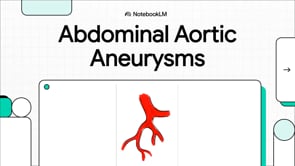この包括的ガイドでは、医師が良性甲状腺結節と悪性(癌性)の疑いがある結節を鑑別する方法を解説します。成人の最大67%に認められ、7~15%の癌化リスクを有する甲状腺結節において、適切な評価は極めて重要です。本稿では、血液検査、超音波検査、穿刺吸引生検を含む段階的アプローチを詳細に説明し、2015年米国甲状腺学会ガイドラインに準拠した精度の高い診断と適切な治療方針の決定を確保します。
甲状腺結節の理解:良性病変と悪性病変の鑑別アプローチ
目次
- はじめに:甲状腺結節は頻繁に認められるが適切な評価が不可欠
- 甲状腺結節の種類:良性から悪性まで
- 甲状腺結節の評価:総合的なアプローチ
- 病歴と身体所見:評価の第一歩
- 血液検査:甲状腺刺激ホルモン(TSH)測定から開始
- 画像検査:超音波検査がゴールドスタンダード
- 甲状腺結節のリスク分類システム
- 穿刺吸引生検:確定診断のための手法
- 検査結果に基づく治療戦略
- 特別な症例:偶発腫、小児、妊娠
- 結論:甲状腺結節への体系的アプローチ
- 情報源
はじめに:甲状腺結節は頻繁に認められるが適切な評価が不可欠
甲状腺結節とは、画像検査において正常な甲状腺組織と異なる局所的な増殖を指します。一般集団において非常に一般的で、触診では4~7%に認められますが、高感度超音波検査では成人の最大67%で検出されます。大部分は良性ですが、約7~15%が悪性(癌性)であることが判明します。
甲状腺結節は頻繁に認められ、潜在的な癌リスクを有するため、医療従事者が適切に評価する方法を理解することが不可欠です。癌の見逃しは重篤な健康被害をもたらす可能性があり、良性結節の過剰検査は不必要な医療コストと患者の不安を招きます。本稿では、良性と悪性の甲状腺結節を鑑別するためのエビデンスに基づくアプローチを説明します。
甲状腺結節の種類:良性から悪性まで
甲状腺結節は、非腫瘍性増殖と腫瘍性増殖の2つに大別されます。非腫瘍性には過形成結節、コロイド結節、炎症性結節、甲状腺嚢胞が含まれ、ほぼ常に良性です。腫瘍性には良性腫瘍(濾胞腺腫)と悪性腫瘍(癌)の両方が含まれます。
悪性甲状腺癌には以下の種類があります:
- 乳頭癌(最多)
- 濾胞癌
- 髄様癌
- 未分化癌(稀だが極めて悪性)
- リンパ腫(免疫細胞由来の癌)
- 転移性癌(他臓器からの転移)
甲状腺結節の評価:総合的なアプローチ
甲状腺結節は様々な経緯で発見されます。多くは患者または医師が頸部のしこりに気付いた際に偶然見つかり、他の疾患の画像検査中に偶発的に発見されることもあります。大きな結節では呼吸困難、咽喉頭異常感(喉の詰まり)、嚥下障害などの症状を引き起こすことがあります。
嗄声や高度な嚥下障害など、周囲組織への浸潤が疑われる症状は悪性の可能性を示唆します。評価プロセスには、病歴、身体所見、血液検査、画像検査を含む段階的アプローチが用いられ、どの結節が追加検査を必要とするかを判断します。
病歴と身体所見:評価の第一歩
詳細な病歴聴取は甲状腺結節のリスク評価に不可欠です。小児期の頭頸部放射線照射歴は悪性リスクを大幅に上昇させます。ほとんどの甲状腺癌は孤発性ですが、家族性疾患として発症する場合もあります。
これには髄様甲状腺癌に関連する多発性内分泌腫瘍症2型(MEN2)や、第一度近親者に複数例が認められる家族性非髄様甲状腺癌(FNMTC)が含まれます。FNMTCは単独で発症するか、家族性大腸腺腫症、Cowden症候群、Gardner症候群、Carney複合体1型などの症候群の一部として現れます。
身体所見では甲状腺の視診、触診、頸部リンパ節の評価を行います。結節の大きさ、硬さ、可動性を確認します。通常、甲状腺と結節は嚥下時に上方に移動します。硬く固定された結節や同側のリンパ節腫脹は悪性を示唆する所見であり、速やかな追加評価が必要です。
血液検査:甲状腺刺激ホルモン(TSH)測定から開始
甲状腺結節患者ではまず甲状腺刺激ホルモン(TSH)値を測定します。多くの患者は正常な甲状腺機能(甲状腺機能正常症)を示しますが、TSHが抑制されている場合は機能亢進性結節を示し、悪性リスクは極めて低い(1%未満)です。TSH抑制が認められた患者は内分泌専門医による管理が推奨されます。
血清サイログロブリンは甲状腺癌の検出に感度・特異度ともに乏しく、初期評価では測定すべきではありません。血清カルシトニンは高価であり、髄様癌が強く疑われる場合にのみ測定します。
画像検査:超音波検査がゴールドスタンダード
2015年米国甲状腺学会ガイドラインでは、TSHが正常以下の患者のみが機能亢進性結節同定のため放射性核種シンチグラフィを受けるべきとされています。ヨウ素-123が推奨されますが、オーストラリアではテクネチウム-99m過テクネチ酸塩がより一般的に使用され、ヨウ素-123と高い相関を示します。
超音波検査は甲状腺結節の画像診断における第一選択です。現代の高解像度装置では1~3mmの微小結節も95%の感度で検出可能です。甲状腺結節が疑われる全ての患者、または他検査で偶発的に発見された結節を有する患者は頸部超音波検査を受けるべきです。甲状腺単独ではなく頸部全体を評価することが重要です。
甲状腺結節のリスク分類システム
超音波検査は結節のサイズと形態に関する情報を提供し、これがリスク評価と生検適応の判断基準となります。2015年ガイドラインでは超音波所見に基づき結節を5群に分類し、各群に推定癌リスクと生検推奨が設定されています:
良性所見: 純粋な嚢胞は癌リスク1%未満で、通常生検不要です。
極低リスク: 海綿状または部分嚢胞性結節は癌リスク3%未満。経過観察が基本で、2cm以上で生検を考慮します。
低リスク: 等エコーまたは高エコーの実質結節、あるいは偏在性実質部を有する部分嚢胞性結節は癌リスク5~10%。1.5cm以上で生検推奨。
中等度リスク: 平滑な边缘を有する低エコー実質結節は癌リスク10~20%。1cm以上で生検推奨。
高リスク: 低エコー実質結節または部分嚢胞性結節の低エコー実質部は癌リスク70~90%。1cm以上で以下の懸念所見が1つ以上認められる場合に生検推奨:
- 不整边缘(浸潤性または小葉状)
- 微細石灰化
- 縦横比>1(前後径>左右径)
- 边缘石灰化と軟部組織突出
- 甲状腺外進展所見
超音波所見のみで生検適応が判断できない場合は、通常内分泌専門医(甲状腺専門医)への紹介が必要です。
穿刺吸引生検:確定診断のための手法
穿刺吸引(FNA)生検は甲状腺結節評価の有用な手法であり、不必要な甲状腺手術を大幅に減少させました。経験豊富な術者により適切に実施された場合、診断精度は約95%に達します。生検の適応は結節の超音波所見とサイズに基づいて決定されます。
全ての細胞診結果はベセスダシステムに準拠して報告されるべきです。このシステムは各カテゴリーに対し推定癌リスクと管理推奨を提供します。6つのベセスダカテゴリーは「非診断的」から「悪性」まであり、それぞれ特定の癌リスクと管理方針が設定されています。
検査結果に基づく治療戦略
甲状腺結節管理の主要目的は良性と悪性を鑑別することです。細胞診結果は適切な管理と経過観察を決定する上で中心的な役割を果たします。実際には大多数の結節が良性細胞診を示し、超音波特徴に基づく間隔での経過観察が可能です。
非診断的または不適切な生検結果は超音波ガイド下再生検または専門医紹介の適応となります。明らかな良性以外の全ての結果は内分泌専門医または甲状腺外科医への紹介が必要です。判定不能な細胞診の管理は複雑であり、超音波と生検に精通した内分泌専門医の評価が有用です。
確定または疑いのある悪性腫瘍は全て経験豊富な甲状腺外科医へ直接紹介すべきです。多くの結節は初回生検適応を満たさず、超音波特徴に基づく経過観察が行われます:
- 高リスク結節:6~12か月毎に超音波再検
- 低~中等度リスク結節:12~24か月毎に超音波再検
- 1cm未満の極低リスク結節:5年間で最小限の成長のみを示し、通常定期超音波不要
特別な症例:偶発腫、小児、妊娠
偶発腫: 他疾患の画像検査中に偶然発見される触知不能・無症状の甲状腺結節です。触知可能な結節と同様に7~15%の癌リスクを有します。CT/MRIでは詳細な構造評価ができないため、超音波検査による評価が必要です。多くの偶発腫は1cm未満であり、過剰検査を避けるためサイズに基づくガイドラインに従って管理します。
FDG-PET検査(癌病期評価に使用)の1~2%で甲状腺への集積が認められ、メタ分析ではこれらの35%が悪性でした。この高リスクのため、新ガイドラインではFDG-PETで発見された1cm超の全ての結節に対し超音波ガイド下生検を推奨しています。生検基準を満たさない小さい結節は経過観察とします。
小児甲状腺結節: 触知可能な甲状腺結節は小児の1.8~5.1%に認められ、癌率は成人(5~10%)より高く約26%です。評価原則は成人と同様ですが、重要な相違点があります。小児では甲状腺が小さいため、生検判断は絶対サイズだけでなく臨床状況と超音波所見に基づいて行います。
小児における判定不能細胞診では癌リスクが高いため、再生検ではなく甲状腺外科医紹介の上甲状腺部分切除(葉切除)が推奨されます。
妊娠: 妊娠中に発見された結節はTSH値に基づき評価します。TSHが正常または高値の場合は生検を実施します。甲状腺癌は妊娠中により悪性化することはなく、妊婦は非妊婦と同様の良好な予後を示します。これらの患者は母体と胎児へのリスクを最小化する手術時期について甲状腺外科医の診察を受けるべきです。
結論:甲状腺結節への体系的アプローチ
甲状腺結節は画像診断技術の普及に伴い医療現場で日益に一般的な所見となっています。初期評価には3つの重要検査が含まれます:TSH測定、超音波検査、適応時の穿刺吸引細胞診。放射性核種検査は低TSH患者に限定されます。
大多数の甲状腺結節は良性であり超音波所見に基づく経過観察が可能ですが、明らかな悪性結節は経験豊富な甲状腺外科医へ紹介すべきです。超音波または生検結果が不明確な困難症例では、専門的解釈と指導を提供できる内分泌専門医の診療が有益です。
この体系的でエビデンスに基づくアプローチは、危険な結節を見逃さず、良性病変に対する不必要な処置を最小化し、徹底的な評価と過剰検査の回避のバランスを保証します。
出典情報
原題: Differentiating between benign and malignant thyroid nodules: An evidence-based approach in general practice
著者: Stuart Bailey, Benjamin Wallwork
掲載誌: Australian Journal of General Practice, Volume 47, Issue 11, November 2018
DOI: 10.31128/AJGP-03-18-4518
この患者向け記事は、オーストラリア皇家一般開業医協会刊行物の査読済み研究に基づき、全ての原データ・統計値・臨床推奨事項を保持しつつ、複雑な医学情報を平易な内容に変換したものです。




